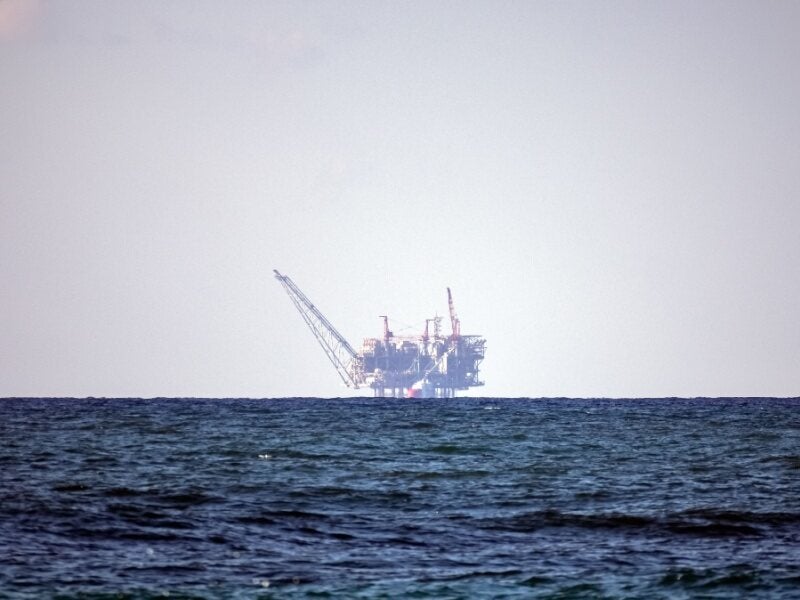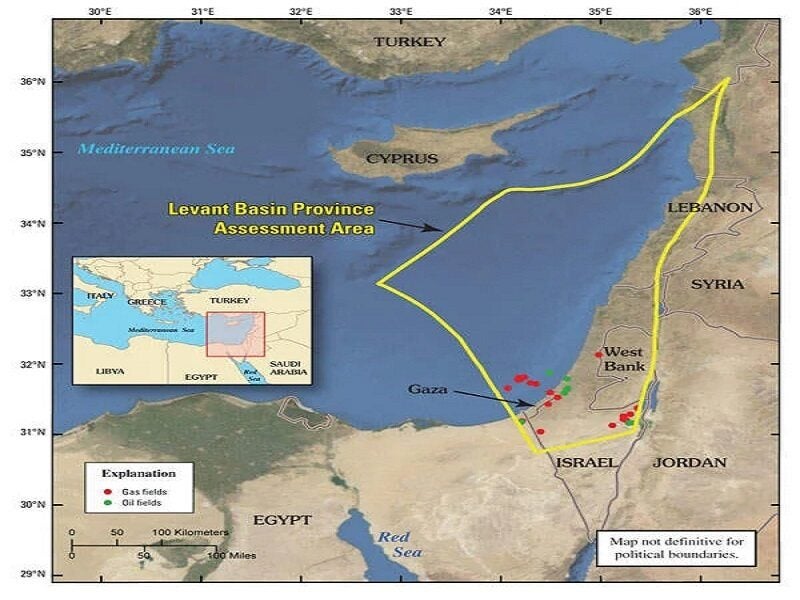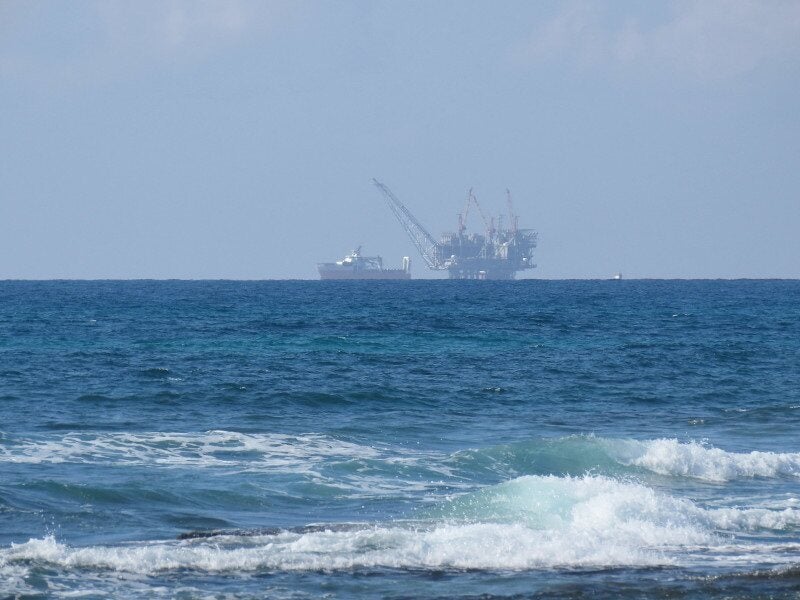The Leviathan natural gas field is located within the Levantine Basin of the Mediterranean Sea, offshore Israel.
The field is jointly owned by Ratio Energies, Chevron Mediterranean, and NewMed Energy with 15%, 39.66%, and 45.34% working interests, respectively. Chevron became the field’s operator with the acquisition of Noble Energy, the field’s previous operator, in June 2020.
Noble Energy obtained approval for the plan of development for the field from Israel’s Ministry of National Infrastructure, Energy, and Water Resources in June 2016.
The final investment decision on the $3.75bn Phase 1A development of the field was taken in February 2017. The first production from Phase 1A commenced in December 2019.
Phase 1B of the Leviathan field will increase gas production capacity from the field from 12bcm a year to 21bcm a year. The project was assigned a budget of $96.4m by the partners for executing the preliminary front-end engineering and design (pre-FEED) in February 2023.
The development of the Leviathan field is in line with the Israeli Ministry of Energy’s vision to replace coal as an electricity-generating fuel by 2025.
Location
The Leviathan gas field lies in 1,645m of water in the Levantine Basin, approximately 130km west of Haifa, Israel. It falls within the Rachel and Amit licenses and covers an area of 330km².
At the time of discovery, the Leviathan gas field was the most prominent field ever found in the sub-explored area of the Levantine Basin, which covers roughly 83,000km² of the eastern Mediterranean region.
Geology of the Levantine Basin and recoverable oil and gas reserves
The Levantine geological basin was formed in several main tectonic stages, and early Mesozoic rifting led to the shaping of a large graben and horst system, stretching across the onshore and offshore Levant Basin. The basin is infilled by post-rift tertiary sedimentation.
Reservoirs within the basin mainly contain Mesozoic and Paleogene sandstones, near-shore marine and submarine sandstones and Jurassic and Cretaceous shelf-margin carbonates.
The Oligo-Miocene reservoir rocks at the Leviathan field are deepwater slope and fan sandstones sealed by sedimentary rocks of the mid to late Miocene age and Messinian age salt. Natural gas at the Leviathan field was found in several sub-salt Miocene intervals.
As per the US Geological Survey’s estimates, the entire Leviathan Basin holds a mean approximation of 1.7 billion barrels of recoverable oil and a mean of 122tcf of recoverable gas.
The Leviathan gas field is estimated to hold proven and probable gas reserves of 16.27tcf and condensate reserves of 35.8 million barrels.
Exploration and drilling at the Leviathan field and well
Noble Energy commenced drilling on the Leviathan-1 well in October 2010 using the Transocean Sedco Express deepwater semisubmersible rig. In the first stage, the well was drilled to a depth of 5,170m. It encountered a minimum of 67m of natural gas pay. The gas was discovered in several sub-salt Miocene intervals.
In May 2012, drilling operations at the Leviathan-1 well were suspended after reaching a depth of 6,522m, approximately 678m short of the target depth. The suspension took place due to high well pressure and mechanical restrictions of the well-bore design.
Drilling of the Leviathan-2 well started in March 2011 by the Pride North America rig. The drilling operations, however, had to be stopped after detecting a flow of water in the well hole.
Drilling of the Leviathan-3 well commenced in June 2011 and was successfully completed in December of that year. The third well was located approximately 5km east of the original Leviathan discovery and was drilled to a total depth of 5,226m, encountering a minimum of 88m natural gas pay.
Leviathan gas field development details
The Leviathan field is being developed in two phases – Phase 1A and Phase 1B.
Phase 1A of the Leviathan field is being developed by four subsea wells, a production platform, and two pipelines.
The wells drilled to an average depth of 5km below the sea level are connected to a subsea manifold and an offshore platform through two 120km subsea pipelines. Each well has a production capacity of more than 300 million cubic feet per day (mcf/d).
A fifth production well, Leviathan-8, was drilled in the I/14 Leviathan South lease of the field in June 2022 to boost production from the field. The well targeted the Oligo-Miocene age layer of the Leviathan reservoir. It was connected to the existing subsea system and commenced production in June 2023.
Phase 1B will include three additional wells, related subsea systems along with a regional export module that will be installed on the platform. The module will enable gas to be transported to a floating liquified natural gas facility or a regional export pipeline.
Leviathan production platform details
The production platform is situated some 10km from the west coast of Israel. The 16-pile platform is installed at a water depth of 86m and includes a domestic supply module along with a monoethylene glycol reclamation unit, a liquid storage module and living quarters.
The natural gas is processed and treated at the platform before being sent to the Israel natural gas transmission system.
Gas transportation details
The natural gas produced at the production platform is sent via a gas pipeline onshore to Dor Beach and to the Israeli national grid for further distribution to clients in Israel, Egypt, and Jordan.
In July 2023, the final investment decision for laying a third subsea transmission gas pipeline with an estimated investment of $568m was made. The new subsea gas pipeline will allow the expansion of the gas supply from the field to Israel Natural Gas Lines’ transmission system from 1.2bcf/d to 1.4bcf/d by 2025.
Contractors involved
OneSubsea, a subsidiary of Schlumberger, was chosen to supply production trees, tree-mounted controls and topside controls for the project in 2017.
Schlumberger provided engineering service for the 2,000-tonne single-life process module of the project in February 2018.
Ensco, an offshore drilling company, was chosen to drill two wells and four production wells via ENSCO DS-7 deepwater drillship in August 2017.
John Wood Group, an engineering consulting company, performed the FEED, procurement, and project management for a fixed production platform and jacket of the field in 2017.
Allseas, an offshore pipelay and subsea construction company, was chosen to install a 500km subsea pipeline system for the field in 2017.
Sandvik, an engineering company, was contracted to provide stainless steel umbilical tubes for the field in April 2017.
Trendsetter Engineering designed and manufactured subsea production equipment for the field as per the contract signed in April 2017.
Corinth Pipeworks, a steel pipes supplier, was contracted to supply longitudinally submerged arc-welded steel pipes for the field in July 2023.
Heerema, an offshore contractor, was contracted for the transportation and installation of production platform topsides and jacket. Heerema’s Thialf and Sleipnir, semisubmersible crane vessels were used for the same.
Jumbo Maritime, a shipping and offshore transport and installation company, TechnipFMC, an engineering technology company, SPT Offshore, an offshore contractor, and RSL One, a dimensional control and survey services provider, are some of the other contractors involved in the project.
Suppliers involved in the project include Habonim, a valve solution provider, Oil States Industries, an energy systems and solutions provider, Dyna-Mac, a provider of design and engineering services for offshore topside modules, GATE Energy, an engineering and commissioning services provider, and Cameron Solutions.
Maritime border issues between Lebanon and Israel over the gas field
Lebanon considered the Leviathan and Tamar gas fields to extend into Lebanese territory and claimed Israel was ignoring this fact. Israel retaliated by threatening to use force to protect its gas discoveries.
The rights dispute was resolved in August 2010 when the Lebanese government presented its official view to the UN, where the UN stated that the two disputed gas fields, Tamar and Leviathan, did not fall within its territory.






